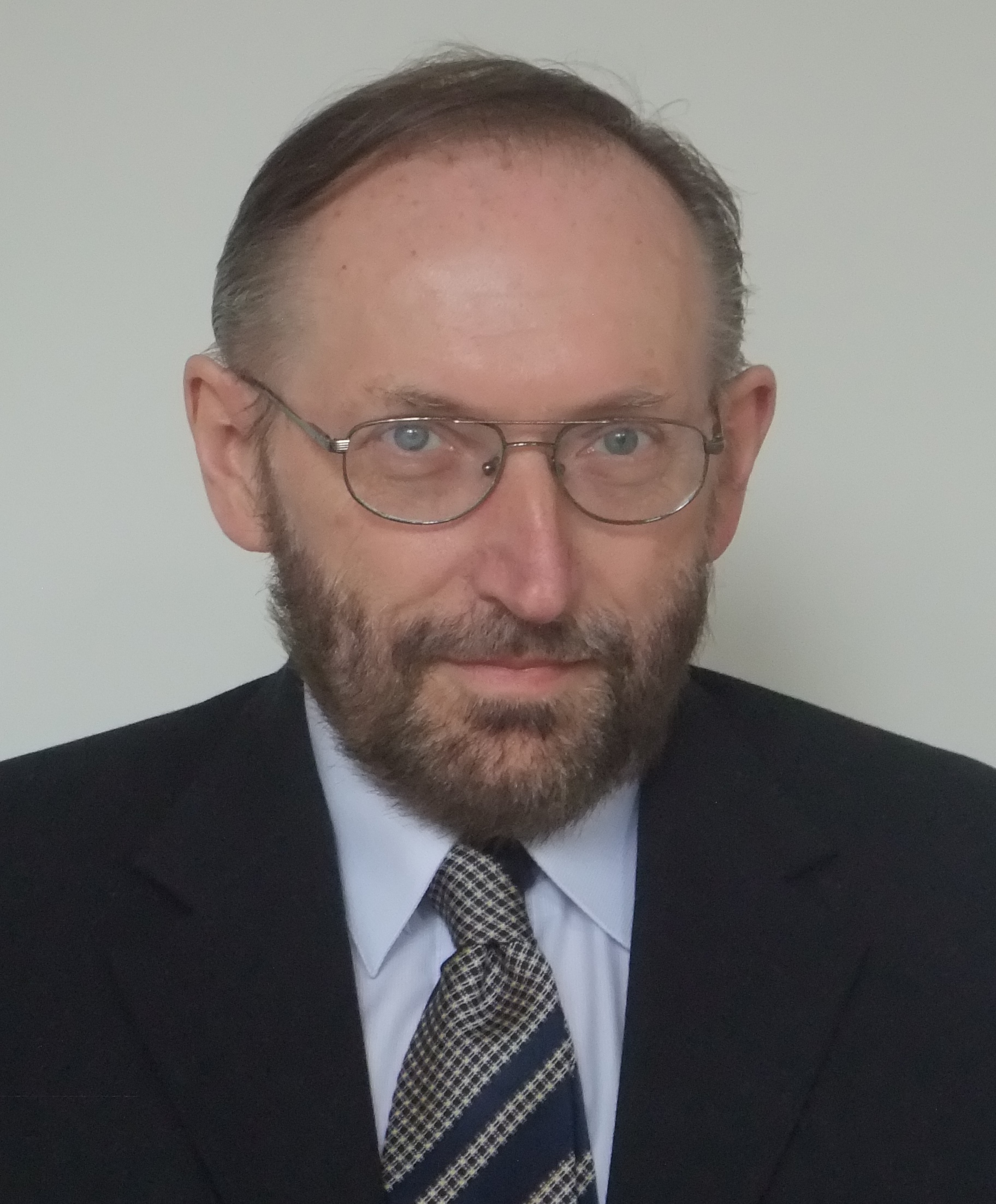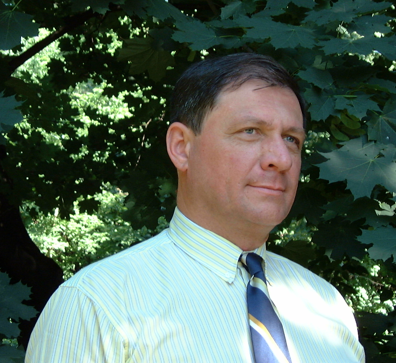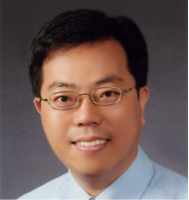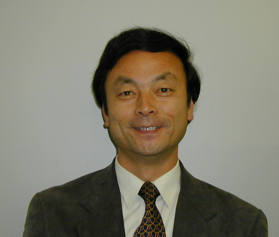Plenary Talk
Plenary Talk 1: December 4, 2014, 8:40-9:40
Chair: Shinichi Yoshida (Kochi University of Technology, Japan)
New Avenues of Design of Distributed Intelligent Systems: A Framework of Granular Computing
Prof. Witold Pedrycz
Department of Electrical & Computer Engineering University of Alberta, Edmonton Canada and Systems Research Institute, Polish Academy of Sciences Warsaw, Poland
Information granules, and fuzzy sets, in particular, have established themselves as a conceptual and algorithmic vehicle aimed to realize a thorough analysis and design of intelligent systems. With the manifestation of various facets of information granularity and their ensuing formal representations, type-2 and interval-valued fuzzy sets have become more visible and practically relevant. In this talk, we pursue this general line of thought by introducing granular fuzzy sets - fuzzy sets whose grades of membership are, in general, information granules themselves.
We thoroughly discuss a number of key formalisms of representing information granules (sets, intervals, fuzzy sets, rough sets, shadowed sets, etc.), emphasize their role in the formation of explicitly expressed knowledge tidbits, and discuss ways of acquiring of information granules on a basis of available experimental evidence. Given the plethora of formal settings of information granules, there are several principles, which hold regardless of this diversity and lead to a unified and cohesive processing platform: (i) the principle of justifiable granularity, (ii) an optimal allocation of information granularity, and (iii) emergence of hierarchies of layers of information granules (forming higher order and higher type constructs).
In the sequel, an origin, motivation, and selected representative examples arising in granular rule-based system modeling, especially in the context of distributed data, are discussed. We highlight key motivating factors behind the emergence of type-2 and order-2 of information granules and reveal apparent linkages between type-n information granules and hierarchical architectures of constructed models.
The role of information granules is elaborated on with regard to general problems of data quality and imputation mechanisms where we demonstrate that the results of imputation are inherently information granules rather than plain numeric entities.

Biography
Witold Pedrycz is a Professor and Canada Research Chair (CRC) in Computational Intelligence in the Department of Electrical and Computer Engineering, University of Alberta, Edmonton, Canada. He is also with the Systems Research Institute of the Polish Academy of Sciences, Warsaw, Poland. He also holds an appointment of special professorship in the School of Computer Science, University of Nottingham, UK. In 2009 Dr. Pedrycz was elected a foreign member of the Polish Academy of Sciences. In 2012 he was elected a Fellow of the Royal Society of Canada. Witold Pedrycz has been a member of numerous program committees of IEEE conferences in the area of fuzzy sets and neurocomputing. In 2007 he received a prestigious Norbert Wiener award from the IEEE Systems, Man, and Cybernetics Council. He is a recipient of the IEEE Canada Computer Engineering Medal 2008. In 2009 he has received a Cajastur Prize for Soft Computing from the European Centre for Soft Computing for “pioneering and multifaceted contributions to Granular Computing”. In 2013 has was awarded a Killam Prize. In the same year he received a Fuzzy Pioneer Award 2013 from the IEEE Computational Intelligence Society.
His main research directions involve Computational Intelligence, fuzzy modeling and Granular Computing, knowledge discovery and data mining, fuzzy control, pattern recognition, knowledge-based neural networks, relational computing, and Software Engineering. He has published numerous papers in this area. He is also an author of 15 research monographs covering various aspects of Computational Intelligence, data mining, and Software Engineering.
Dr. Pedrycz is intensively involved in editorial activities. He is an Editor-in-Chief of Information Sciences and Editor-in-Chief of WIREs Data Mining and Knowledge Discovery (Wiley). He currently serves as an Associate Editor of IEEE Transactions on Fuzzy Systems and is a member of a number of editorial boards of other international journals.
Plenary Talk 2: December 5, 2014, 13:00-14:00
Chair: Norikazu Ikoma (Kyushu Institute of Technology, Japan)
Fuzzy signatures, situational maps and fuzzy signature state machines
Prof. Laszlo T. Koczy
Széchenyi István University, Budapest University of Technology and Economics, Hungary
In many engineering and other applied problems there is a series of (vague) features which may be grouped into subsets with components related closer to each other, even to sub-subsets within these subsets. Such structures may be represented by either a tree graph, or an iteratively nested vector (with sub-vectors as components). Such constructions will be called Fuzzy Signatures.
Such Fuzzy Signatures (FS) are complex, hierarchically structured uncertain descriptors which should be suitable for manipulations even when their respective actual tree structures are not entirely identical. The presentation will give an introduction to the definitions and basic operations in connection with FS.
A very special extension of the idea of FS is given by the Fuzzy Situational Maps (FSM) where the sub-trees represent matrices of two or more dimensions with more or less fixed spatial structure. Zoom in and Zoom out operations combined with proper fuzzy aggregations help to increase or decrease the detail view of a given part of the area described by the FSM, and at the same time, allow partial complexity reduction by shrinking the information into higher hierarchical levels.
When the fuzzy values at the leaves of the trees are time/sequence dependent, state machines emerge. A complex hierarchical system of interconnected or interrelated fuzzy state machines can be represented by a Fuzzy Signature State Machine. Basic concepts will be also introduced.
A series of possible applications of FSM will be presented, such as the description of the condition and renovation procedure of residential buildings, warehouse layouts and inbounding/outbounding of goods, and the communication and collaboration of intelligent mobile robots (this latter based on the original ideas of the LIFE research team lead by the late Prof. T. Terano in the 1990-s), including dynamically changing scenarios with optimization aspects.

Biography
Laszlo Koczy received the M.Sc., M.Phil. and Ph.D. degrees from the Technical University of Budapest (BME) in 1975, 1976 and 1977, respectively; and the (postdoctoral) D.Sc. degree from the Hungarian Academy of Science, all in Electrical/Control Engineering. He spent most of his career at BME until 2001 and from 2002 at Szechenyi Istvan University (Gyor, SZE).
However, he has been a visiting professor at various universities abroad, namely in Australia (ANU and others), in Japan (TIT, where he was one of the LIFE Endowed Fuzzy Theory Chair Professors and at the same time an advisor to the Laboratory for International Fuzzy Engineering Research in Yokohama), in Korea (POSTECH), Austria, and Italy. His focus of research interest is fuzzy systems and Computational Intelligence topics (evolutionary algorithms, neural networks), as well as applications. He has published over 450 refereed papers and several text books on the subject. He did introduce the concept of rule interpolation in sparse fuzzy models, and hierarchical interpolative fuzzy systems, fuzzy Hough transform, and also fuzzy signatures and fuzzy situational maps among others. His research interests include applications of CI for telecommunication, transportation and logistics, vehicles and mobile robots, control, information retrieval, etc.
He was an Associate Editor of IEEE TFS and is now of Fuzzy Sets and Systems, Int. Journal of Fuzzy Systems, Journal of Advanced Computational Intelligence, Int. J. of fuzzy Systems, etc.
He was the General Chair of FUZZ-IEEE 2004 in Budapest, Special Session Chair of WCCI 2012 and Panel Chair of FUZZ-IEEE 2013, will be the Poster Chair of WCCI 2016; was a chair, co-chair, PC member, etc. at many other scientific events. He served in the International Fuzzy Systems Association as President, and he was Administrative Committee member of IEEE Computational Intelligence Society for two cycles and he was another two cycles a member of the AdCom of the IEEE Systems Council.
At SZE he is president of the University Doctoral Council and of the University Research Council, he has been appointed member of the Hungarian Accreditation Committee for Higher Education by the Prime Minister, where he chairs the Engineering Sub-Committee, he is a member of the National Doctoral Council (Hungary), of the National Fellowship Committee and of the National Advisory Board for Industrial Safety.
Plenary Talk 3: December 5, 2014, 17:30-18:30
Chair: Prof. Sungshin Kim (Pusan National University, Korea)
Human-Like Lifelong Machine Learning
Prof. Byoung-tak Zhang
Seoul National University, Korea
During the last decade machine learning technology, such as deep learning, has been very successful in many applications, including business analytics, text mining, speech recognition, computer vision, and autonomous robots. Machine learning is usually defined as a study of algorithms for automatically building models from observed data. However, this narrow definition does not reflect the full capability of humans as ideal learners. We should better pursue a “learning agent” that improves its performance through “acquisition of knowledge” from the “interaction” with the environment. This talk will critically review the state-of-the-art machine learning algorithms and argue for the need for human-like, lifelong machine learning to achieve human-level artificial intelligence. We will then present a learning architecture, the hypernetwork, that is designed to learn rapidly, flexibly, and robustly from sequentially observed data over an extended period of time. The hypernetwork model uses the sparse population coding principle borrowed from the biological brain and learned by a statistical-physical evolutionary algorithm. Applications will demonstrate the potential of hypernetworks for human-level machine learning: learning language from TV dramas, learning to compose music from digital albums, simulating children’s cognitive development of concept learning from cartoon videos, predicting mobile activities of smartphone users, user modeling with wearable devices, and learning from human activities to teach robots. Finally, we discuss why and how human-like lifelong machine learning can impact artificial intelligence, cognitive science, humanoid robotics, and smart service industries in the near future.

Biography
URL: http://bi.snu.ac.kr/~btzhang/
Byoung-Tak Zhang is a Professor of Computer Science and Engineering and Adjunct Professor of Cognitive Science and Brain Science Programs at Seoul National University, Seoul, South Korea where he directs the Biointelligence Laboratory (http://bi.snu.ac.kr/) and the Institute for Cognitive Science. He is currently Visiting Professor at Princeton Neuroscience Institute (PNI), Princeton, NJ. He received his Ph.D. in Computer Science from the University of Bonn, Germany, in 1992 and his B.S. and M.S. in Computer Science and Engineering from Seoul National University in 1986 and 1988, respectively. Before joining Seoul National University in 1997 he has worked for the German National Research Center for Information Technology (GMD, now Fraunhofer Institutes) for 1992-1995. He has been Visiting Professor at MIT CSAIL and Brain and Cognitive Sciences Department, Cambridge, MA (2003-2004), Bernstein Center for Computational Neuroscience Berlin (2005-2006), and BMBF Excellence Centers of Cognitive Technical Systems in Munich and Cognitive Interaction Technology in Bielefeld (2011). He served as the President of the Korean Society for Artificial Intelligence (2010-2012). He has received a number of awards and honors, including Minister of Science and Technology Award, Okawa Research Grant Award, and Distinguished Service Award from the IEEE Computational Intelligence Society. His long-term research questions are “How does the brain learn so rapidly, flexibly, and robustly in an ever-changing environment? What kinds of processing and organizational principles does the brain use for continuous prediction, action, and learning? How do we deploy these principles to build a cognitive learning agent that can see, talk, and act like humans?” His work has been published in major journals and conferences, including Machine Learning, Evolutionary Computation, IEEE Transactions on SMC, Cell, Bioinformatics, AAAI, ICML, NIPS, and CogSci with major contributions in machine agency, human-level cognitive machine learning, hypernetworks (2008-present), hierarchical Bayesian networks (2005), self-organizing latent lattice models (2003), Bayesian evolutionary algorithms (2001), molecular programming (1998), evolutionary neural trees (1995), and self-teaching neural networks (1991). He serves as an Associate Editor of IEEE Transactions on Evolutionary Computation (1997-2010), BioSystems, Journal of Cognitive Science, Applied Soft Computing, and Advances in Natural Computation.
Plenary Talk 4: December 6, 2014, 8:40-9:40
Chair: Yutaka Hatakeyama (Kochi University, Japan)
Visualization Method of Kansei Information based on Soft Computing Technology
Prof. Kaoru Hirota
Tokyo Institute of Technology, Japan
The presenters’ group at Tokyo Institute of Technology has been studying on various visualization methods of “Kansei" (affective computing) information in multi-agent society. The multi-agent society consists of many agents such as humans, machines, and/or robots, where they are supposed to be connected by internet and to communicate with each other. In the traditional study on such a communication including human-robot (or man-machine) interaction, mostly one to one communication has been stressed. In the near future, however, a society consisting of many humans and many robots (or machines) should be investigated, i.e., a multi-agent society. To realize smooth communication in such a multi-agent society, various topics should be investigated such as human-like higher level recognition mechanism and information time delay problem of internet. Among them one of the most important issues is “Kansei" information processing and their visualization methods which are stressed in this plenary talk. The “Kansei" engineering has been studied originally in Japan. Nowadays, as is known, “Kansei" is widely accepted in all over the world and is sometimes referred to affective engineering/computing. From the recent results of presenters’ group, three topics are selected and introduced in this plenary talk, i.e., “deep level emotion understanding", “fuzzy atmosfield", and “Kansei texture". The basic ideas and formalizations are mentioned first followed by visualization methods based on soft computing technology with several demonstration experiments.

Biography
Kaoru HIROTA received Dr. E. degrees from Tokyo Institute of Technology in 1979. After his career at Sagami Institute of Technology and Hosei University, he has been with Tokyo Institute of Technology. His research interests include fuzzy systems, intelligent robot, and image understanding. He experienced president and fellow of IFSA (International Fuzzy Systems Association), and president of SOFT (Japan Society for Fuzzy Theory and Systems.) He is a chief editor of J. of Advanced Computational Intelligence and Intelligent Informatics. Banki Donat Medal, Henri Coanda Medal, Grigore MOISIL Award, SOFT best paper award, Acoustical Society of Japan best paper award, honorary/adjunct professorships from “de La Salle University (Philippine), Changchun Univ. of Science & Technology (China), Harbin University of Science and Technology (China), the University of Nottingham (UK), and Beijing Institute of Technology (China)", and Honoris Causa from “Bulacan state university (Philippine), Budapest Technical University (Hungary), and Szechenyi Istvan University (Hungary)" were awarded to him. He organized more than 10 international conferences/symposiums as a founding/general/program chair. He has been publishing more than 250 journal papers, 50 books, and 500 conference papers.